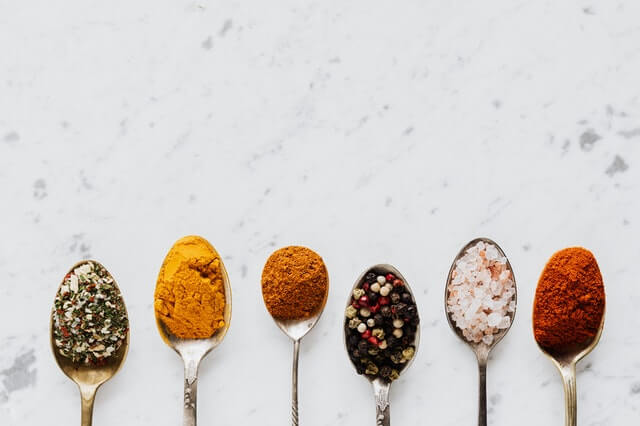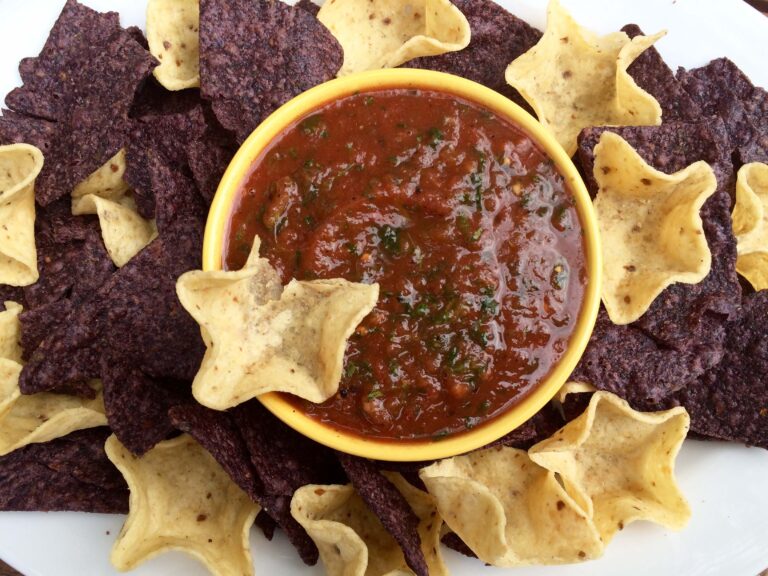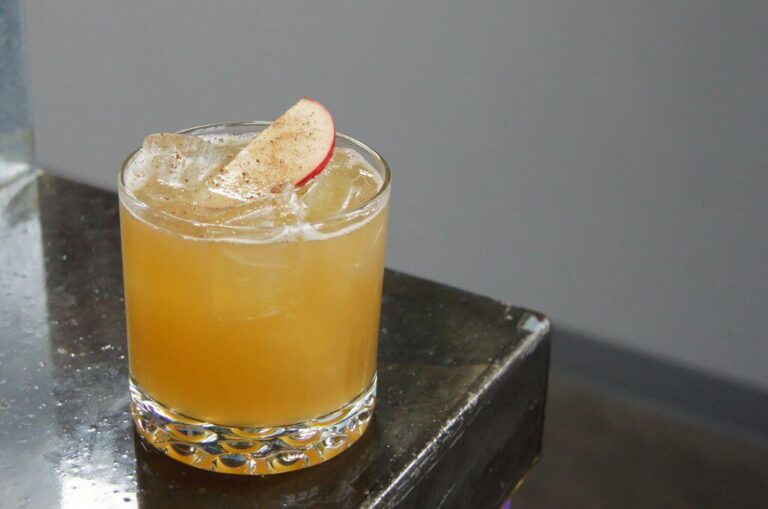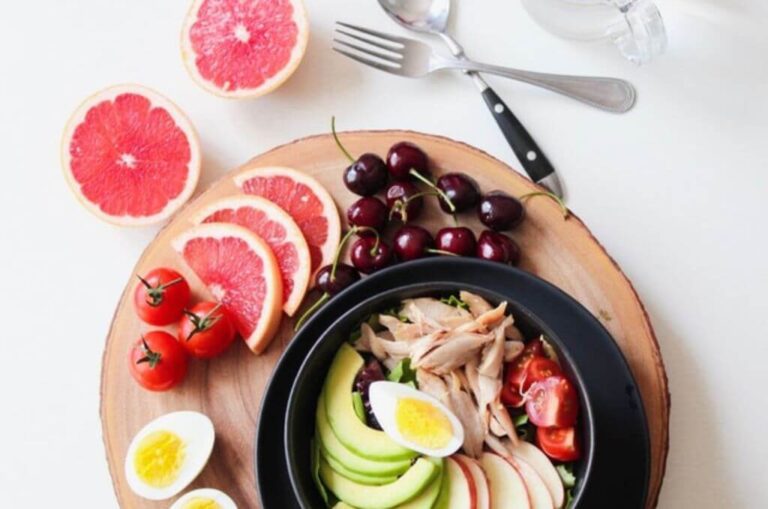Sneaky Ways Your Diet is Causing Inflammation and How to Fight it

When I talk about chronic inflammation, I am not talking about an outward wound in need of medical attention. Before February of 2017 that’s what I would have thought chronic inflammation was. That was the year I learned I had chronic inflammation- and that it was the reason so many things were going wrong with my body.
While I learned that inflammation is a indeed part of wound healing; chronic inflammation is unseen and can be at the heart of many ailments we face from inability to lose weight to cancer to diabetes to chronic fatigue– to name a few.
Inflammation in all of its categories is the bodies reaction to a foreign invader. It is intended to help, but when inflammation goes unchecked for long periods of time it can lead to health problems such as depression, cancer, diabetes, heart disease, and even the inability to lose weight.
Causes of Chronic Inflammation
Now that we know chronic inflammation isn’t good for us -but how did it happen?
What made the inflammation tick up so high in our bodies that it is now causing health problems?
Chronic inflammation has many causes but main culprits are:
- Chronic Stress
- Lack of sleep
- Obesity
- Sugar
- Refined Carbs
- Processed foods- due to their high content of trans fats, vegetable, and seed oils.
- Processed meats and red meat
- Margarine, lard, and shortening- it’s the trans fats
- Sedentary life style
- Excessive intake of alcohol
- toxins, poor air quality
For me, inflammation was caused by chronic stress, lack of sleep, and eating foods that my body couldn’t tolerate like bread products-my favorite- and sugar another favorite.
How do I know If I have Chronic Inflammation?

Chronic inflammation is something on the inside. That makes it harder for us to figure out if inflammation is what is bothering us, physically.
Novant Health sites these 7 as some of the most common symptoms of chronic inflammation:
- Body discomfort, including joint stiffness, tendonitis and muscle pain.
- Sleep disorders like insomnia, sleep apnea and persistent fatigue.
- Weight gain or unexplained weight loss.
- Skin rashes like psoriasis and frequent infections (viruses, etc.).
- Abdominal pain, acid reflux and other digestive system issues.
- Unexplained fever.
- Mood disorders, including depression and anxiety.
I can personally attest that I had 5 out of these 7 symptoms when I went to the doctor and dietitian. I also had chronic dry eye and periodic discomfort in my knees. My dietitian believed those could also be symptoms of chronic inflammation, for me.
Symptoms of Chronic Inflammation
Researchers have found- through blood tests- that when inflammation markers in the blood rise so does the tendency toward depression which can work in tandem with fatigue. Inflammation is also known to attack our central nervous systems, affecting our sleep patterns. The lack of sleep causes fatigue, which can cause, or exacerbate, depression- causing a cycle.
Stomach pain can also be a clue that chronic inflammation is causing some of your health problems. Celiac disease, irritable bowel syndrome (IBS), and inflammatory bowel disease (IBD) are believed to be connected with chronic inflammation. Tell your doctor if you are experiencing any of these symptoms, be sure to include information about your bowel movements. I know it can be embarrassing to talk about #2 with a doctor, but the substance and frequency of your movements can be a tell as to whether or not you are having inflammation induced bowel problems.
I had actually grown accustomed to having chronic stomach issues, for more years than I can count. Changing what I ate ,with the help of my dietitian’s elimination diet, helped us to pinpoint which foods were causing inflammation in my bowels.
Unfortunately for me, bread and sugar were the major culprits. BOOOOOOO! I was tested positive years ago for a wheat intolerance, that I ignored. Turns out it didn’t want to ignore me. My unchecked wheat intolerance was a contributor to my inflammation. Since switching to only gluten free breads and pastas, and honestly, I even limit those, my stomach feels great. Like, I-don’t- even-remember-the-last-time-my-stomach-felt-so-good kind of great. I also do not crave sugar like I use too.
Stress– especially chronic stress– can cause an excess production of cortisol and inflammation which both contribute to weight gain. They can even contribute to your inability to lose weight. This was one of the many things that sent me to the doctor. I did not know that chronic inflammation existed let alone that it was one of the reasons that I had gained weight and could not take it off. I gained over 10lbs in a little over one month’s time and was not eating any differently that I had before!
If you are having any of these symptoms, or others, visit your doctor. They can test your blood for elevated inflammation markers and elevated cortisol levels.
15 Inflammation Reducing Foods
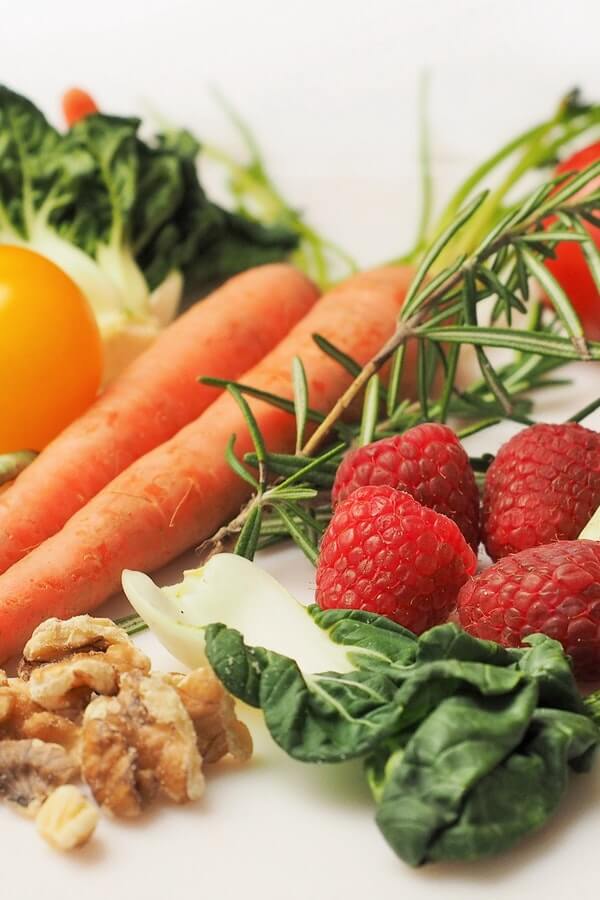
Changes in our diets and lifestyle can do a lot to help combat inflammation.
Many of the foods that combat inflammation are foods you are already familiar with. These are foods filled with antioxidants, minerals, essential fatty acids and polyphenols that help bolster our immune systems and fight inflammation.
What I like about anti-inflammatory eating is that it doesn’t need to be hard.
At first it may take some thought, but most items are readily available at your local grocery store. And Pinterest is a god send when it comes to finding new recipes for incorporating these foods into your meals and lifestyle.
More article like this:
1. Brassica Family of Vegetables
They contain glucosinolates, which inhibit the inflammatory process and sulforaphane, for blocking enzymes associated with inflammation.
These lovely cruciferous vegetables also contain vitamin K which the body uses to regulate our immunes systems.
- cauliflower
- broccoli
- kale
- brussel sprouts
- bok choy
Don’t worry if these aren’t your cup of tea, there are plenty of veggies out there to incorporate.
2. Leafy Green Vegetables
- Spinach
- Chard
- Silverbeet
All three are filled with inflammation fighting carotenoids.
4. Beets
Now, I know many of us may have a complicated relationship with beets, which is a shame, because they are filled with vitamins, iron, potassium, protein, calcium, and antioxidants, all in an inflammation fighting little package.
5. Tomatoes
filled with the antioxidant lycopene– which is shows evidence of suppressing inflammation.
Cooking enhances the lycopene. Sounds like a great excuse to make some homemade pasta sauce.
More Like This:

6. Onions and Garlic
Both of these are in the allum family and both are excellent sources of quercetin.
Quercetin hinders inflammation causing histamines.
Garlic and onions also contain immune boosting sulfuric compounds as well.
Garlic contains allicin. Allicin blocks “pro-inflammatory messengers” as well as being heart health friendly.
7. Olives & Olive Oil
Olives use their polyphenols to combat inflammation and protect against chronic inflammation, tissue damage from oxidative stress, and protecting DNA at a cellular level.
When olives or olive oil are consumed in conjunction with carotenoid containing vegetables, like leafy greens, the carotenoids are enhanced.
Greek salad with olive oil vinaigrette must be an inflammation fighting power house!
8. Avocado
One avocado contains over 20, that’s right, 20 different vitamins and minerals!
Avocado also contains heart healthy monounsaturated oleic acid fatty acids and they reduce inflammation.
Eating avocados along with veggies, helps to magnify your absorption of antioxidants, such as carotenoids.
So, go ahead have a little more homemade guac, make a second avocado toast with whole grain bread. That little avocado is a powerhouse of vitamins and anti-inflammation!
9. Berries
Bright colored berries have been found to be very high in antioxidants and anthocyanins. Anthocyanins cut down on oxidative stress from inflammation and block inflammatory processes.
Some favorite antioxidant powerhouse berries are:
- blueberries
- strawberries
- blackberries
- cranberries
- and the very powerful raspberry.
Raspberries house ellagic acid, an antioxidant, which helps the antioxidant quercetin to destroy cancerous cells!
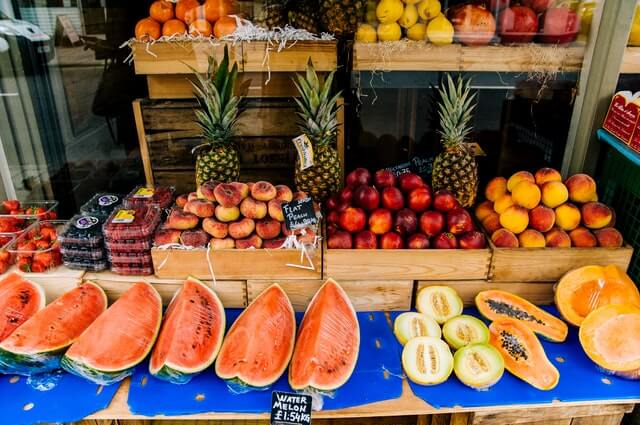
10. Fruits
The idea is to choose the deepest colored fruit because they have the most antioxidants and polyphenols.
However, there are many fruits that can fight inflammation:
- Cherries
- plums
- prunes
- oranges
- watermelon
- grapes
- raisins
- pineapple
- apples
- peaches
- apricots
- nectarines.
Oranges and orange colored fruits have been found to inhibit inflammation that targets the joints.
Watermelon, oranges, mangos, and peaches contain the inflammatory fighter beta-cryptoxanthin. Beta-crytoxathin has been found to lower the risk of arthritis which is an inflammatory disease.
Watermelon not only contains beta-crytoxathin, it also has lycopene the same inflammatory inhibitor as tomatoes. While watermelon is helping to fight free radicals, and inflammation, the choline that it houses will help to minimize chronic inflammation.
11. Nuts & Seeds
Almonds, Walnuts, Pecans, Sunflower Seeds, Flaxseed, Chia Seeds, Cashews, Hazelnuts, Hemp Seeds, you are probably getting the idea. Nuts and seeds are full of monosaturated fats, polyunsaturated fat, vitamins, minerals, and fiber. All it takes is a handful in order to receive their inflammation fighting benefits.
Walnuts, pecans, and sunflower seeds are a good source of anti-oxidants and phytochemicals. Walnuts set themselves apart by being high in the oxidative damage shield, polyphenols.
ALA Omega-3 rich flax seed can be bought whole or ground. Adding flax seed to yogurt and baked good is an easy and yummy way to fight inflammation, particularly cardiovascular inflammation.
Omega-3’s have so many benefits, one of them being inflammation reduction. Luckily they are easily attained in walnuts, chia seeds, flax seeds, hemp seeds, hazelnuts, cashews, and brazil nuts.
Consuming nut butters will also give you the omega-3’s and inflammation fighting benefits of their whole nut alternatives.
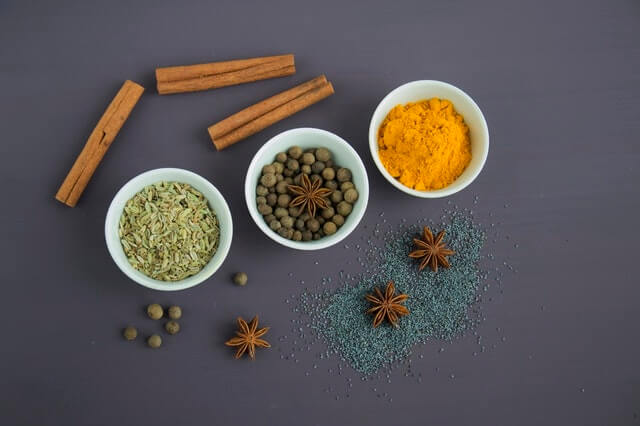
12. Spices & Herbs
The University of Wisconsin sights the herbs and spices:
- ginger
- rosemary
- turmeric
- oregano
- cayenne
- clove
- nutmeg, and
- cinnamon as having anti-inflammatory compounds.
Turmeric is a spice that seems to be on everyone’s lips these day. Whether it is cooked into a dish or used for haldi doodh, AKA golden milk, turmeric is an anti-inflammatory power house. Research has found the curcumin in turmeric to help reduce and prevent free radical damage from inflammation.
Ginger reduces the pro-inflammatory cytokine and chemokines ability to synthesize due to its gingerol and shogaol compounds. Research also found that ginger may even reduce allergies.
13. Green Tea:
While both green tea and black tea contain the anti-oxidants, flavonoids, green tea has the most.
Green tea also contains a polyphenol, EGCG. EGCG prevents pathways that allow for inflammation. It also reduces the production of pro-inflammatory cytokines and ECGC reduces inflammatory damage to your cells fatty acids.
Whether you drink it iced or hot- green tea will have the same amazing inflammation busting effect.
Green Tea, Taste
I have spoken with many of my friends. Most either hate the taste of green tea and will not drink it; or they hate the taste of green tea and they do drink it.
I was in the second camp for years, until I read that for optimum benefits and taste, green tea should be steeped at 175 degrees Fahrenheit.
While I could use a thermometer to take the temperature of water in a saucepan on the stove, I opted for an electric tea kettle. Over the past 13 years I have owned several good electric tea kettles. My favorite by far is the Cuisinart Perfect Temp Tea Kettle because I can choose from 6 different tea setting, one of them being Green Tea 175.
Drinking green tea at the optimum temperature completely changed my relationship with green tea. I’m not the only one. Friends of mine that have opted to try green tea at 175 also agree. The flavor is less biting, much smoother. I now drink 2 to 3 cups a day, easily.
I also recommend adding a teaspoon of local honey– it will sweeten the tea and add even more anti-inflamatory properties to the green tea.
Matcha
Matcha is a green tea that is currently having a moment. Long story short, matcha is a green tea where the leaves are ground into a powder, then the whole leaf is consumed.
Matcha has 3 times the antioxidants of 1 cup of green tea, it also has more caffeine than 1 cup of regular green tea. Due to all of these factors it is recommended to drink no more than 2 cups of matcha a day.
14. Fish
Sardines, mackerel, salmon, trout, and anchovies contain those inflammatory fighting, Omega-3’s you might have heard of in the news.
These omega-3 fatty acids in fish fight pro-inflammatory enzymes called, COX, they also offset the pro-inflammatory effects of certain omega-6 fatty acids as well as being great for the brain.
Eat fatty fish twice a week for the best results. If you aren’t someone who likes fish- try an Omega-3 supplement. Please don’t forget to check with your doc before starting a supplement regimen.
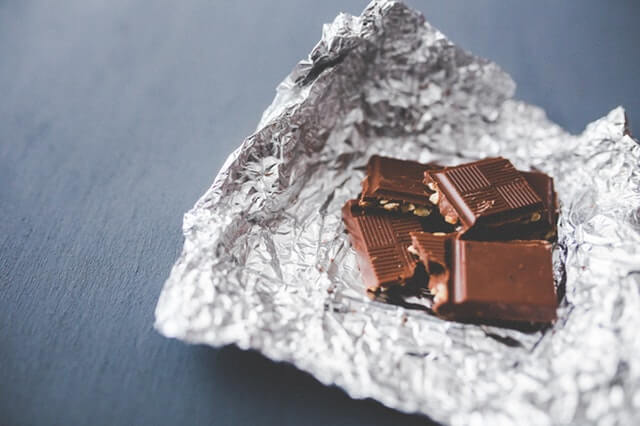
15. Dark Chocolate
First off, this is my favorite way to fight inflammation. It allows me to tell myself that chocolate is a health food.
The important part of the whole chocolate-is-a-health-food trick, is that the chocolate has to be 70% cocoa.
Dark chocolate is rich in the antioxidant, flavonoids. The flavonoids in the dark chocolate fight inflammation and they keep the endothelial cells of your heart arteries healthy.
Now quick, run out, grab some dark chocolate, and start fighting inflammation!

